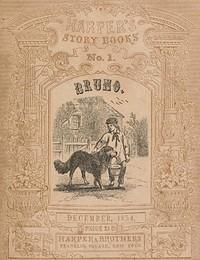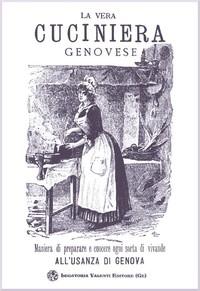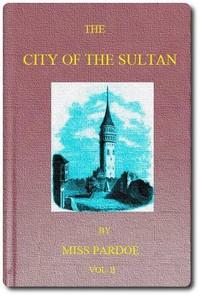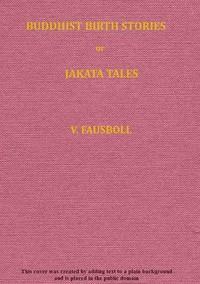Read this ebook for free! No credit card needed, absolutely nothing to pay.
Words: 5877 in 2 pages
This is an ebook sharing website. You can read the uploaded ebooks for free here. No credit cards needed, nothing to pay. If you want to own a digital copy of the ebook, or want to read offline with your favorite ebook-reader, then you can choose to buy and download the ebook.


: Bruno; or lessons of fidelity patience and self-denial taught by a dog by Abbott Jacob - Dogs Juvenile fiction; Conduct of life Juvenile fiction; Children Conduct of life Juvenile fiction; Patience Juvenile fiction; Loyalty Juvenile fiction; Self-denial Ju
BIBLIOGRAPHY 309
INDEX 319
LIST OF PLATES
FINE BOOKS
COLLECTORS AND COLLECTING
From the stray notes which have come down to us about the bibliophiles of the later Roman Empire it is evident that book-collecting in those days had at least some modern features. Owing to the abundance of educated slave-labour books were very cheap, almost as cheap as they are now, and book-collectors could busy themselves about refinements not unlike those in which their successors are now interested. But in the Middle Ages books were by no means cheap, and until quite the close of the fourteenth century there were few libraries in which they could be read. Princes and other very wealthy book-buyers took pleasure in possessing finely written and illuminated manuscripts, but the ruling ideals were mainly literary and scholastic, the aim being to have the best books in as many subjects as possible. After printing had been invented the same ideals continued in force, the only difference being that they could now be carried out on a larger scale. Libraries like those formed in the sixteenth century by Archbishop Cranmer and Lords Arundel and Lumley, or that gathered in France by the historian De Thou, were essentially students' libraries, and the books themselves and the catalogues of them were often classified so as to show what books had been acquired in all the different departments of human knowledge. Even in the sixteenth century, when these literary ideals were dominant, we find some examples of another kind. In Jean Grolier, for instance, we find the book-lover playing the part, too seldom assumed, of the discriminating patron of contemporary printing and bookbinding. Instead of collecting more old books than he could find time to read, Grolier bought the best of his own day, but of these sometimes as many as four or five copies of the same work that he might have no difficulty in finding one for a friend; and whatever book he bought he had bound and decorated with simple good taste in Venice or at home in France. It would be an excellent thing if more of our modern collectors, instead of taking up antiquarian hobbies, were content to follow Grolier's example. Books always look best when clad in jackets of their own time, and this in the future will apply to the books of the twentieth century as much as to any others. Moreover, there is more actual binding talent available in England just now than at any previous time, and it is much to be desired that modern Groliers would give it scope, not in pulling about old books, but in binding beautifully those of our own day.
Bodley's munificent donation marked an epoch in the history of English book-collecting because its tendency was to make private book-collecting of the kind which was then admired incongruous and even absurd. When there were no public libraries open to scholars, for a great man to maintain a splendid library in his own house and allow students to read in it was worthy of Aristotle's , the man who does everything on a scale that befits his dignity. But in proportion as public collections of books and facilities for obtaining access to them are increased, the preservation of a library on a large scale in a private house, where none of the inmates have any desire to use it, becomes an easy and justifiable object of satire. A man without literary instincts who inherits a fine library is indeed in a parlous state, for if he keeps it he is as a dog in the manger, and if he sells it he is held up to opprobrium.
What then are the associations and qualities which give books value in the eyes of a collector? We may answer the question negatively in the first instance by reducing to their proper importance the two qualities which are popularly supposed to be the most attractive to the book-hunter--rarity and age. If a book is otherwise uninteresting, what is it the better for being rare? In passing it may be noted that unless a book is interesting for other reasons its rarity is necessarily an unknown quantity. Sir Sidney Lee's Census of the extant copies of the First Folio Shakespeare, a comparatively common book, but of supreme interest for its associations, is a striking example of the zeal with which every discoverable copy of a valuable book is now hunted down. Those whose business it is to gather such information can tell in the case of dozens of books of much less importance exactly how many copies have been discovered and in whose possession they remain. But in the case of a book of little interest the most that can be said is that it is "undescribed," and it may be "undescribed" not in the least because it is really rare, but because no bibliographer has troubled himself to make a note of it. Were some real point of interest discovered in it the chances are that the attention thus attracted would speedily bring to light other copies, as in the case of the school magazine to which Mr. Kipling was found to have contributed. Of this the first set catalogued sold for over ?100, with the result that so many others were unearthed that the price speedily sank to less than as many shillings.
Granted, however, that it could be proved that a dull book is not merely undescribed, but absolutely, what so few works are, unique, in what way does this make it of interest to the collector? A great library might buy it for a trifle out of compassion, or under the idea that its registration in a catalogue might help to piece out a genealogy, or that it might count as another unit in statistics , or justify its purchase in some other haphazard way. But considerations of this kind, such as they are, cannot affect private collectors. A really dull book is merely a nuisance, and whether only one copy of it, or many, can be proved to exist, nobody wants it. If this be so we are justified in saying that, although as soon as a book is found desirable for any other reason its rarity becomes of paramount importance in determining its price, Rarity by itself is of no interest to collectors.
The attractiveness bestowed by Age cannot be treated quite so summarily, because although the same line of argument can be followed, it has to be helped out by an explanation arising from a particular case. No collector would value a dull sermon printed in 1800 any higher than a dull sermon printed in 1900, and if we go back two centuries instead of one, in the case of a book printed in London its value is none the greater for the extra hundred years. If, however, the sermon chanced to have been printed in 1700 in some provincial town, its age would distinctly be an element of value. Down to 1693 printing was only permitted in London, Oxford, Cambridge, and at York. When the restraining Act was dropped in 1693 printing made its way, not very rapidly, into one provincial town after another. Hence a dull sermon with a provincial imprint may be dear to the heart of some local antiquary as the first-fruit of the press in his neighbourhood.
If we go back another sixty years from 1700 we reach another typographic zone, as we may call it, within which some slight interest attaches to all examples of English printi
Free books android app tbrJar TBR JAR Read Free books online gutenberg
More posts by @FreeBooks


: La vera cuciniera genovese facile ed economica ossia maniera di preparare e cuocere ogni sorta di vivande all'usanza di Genova by Rossi Emanuele - Cooking Italian IT Cucina






